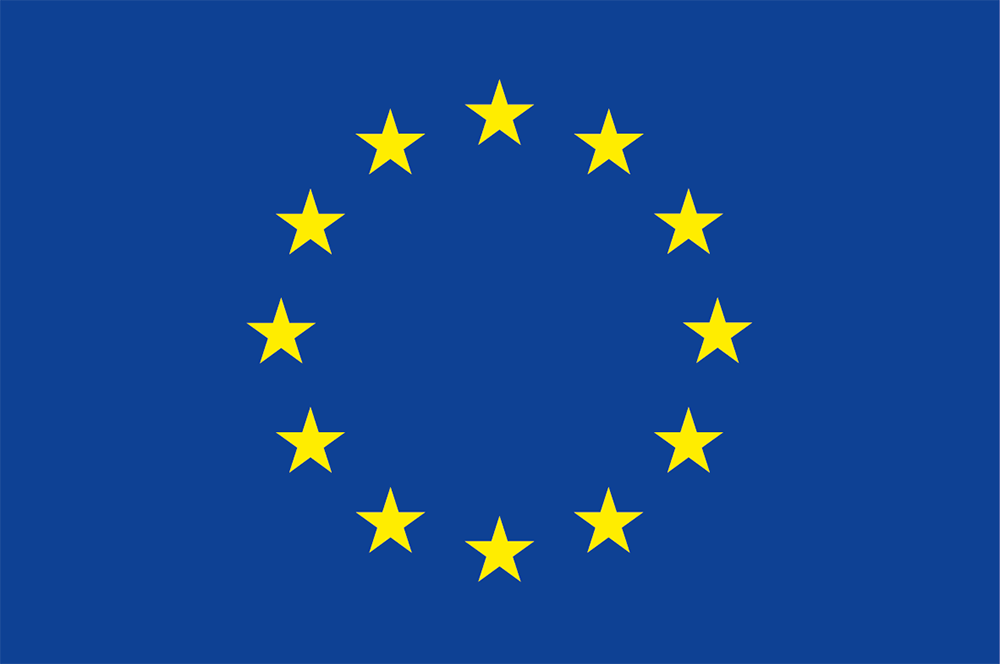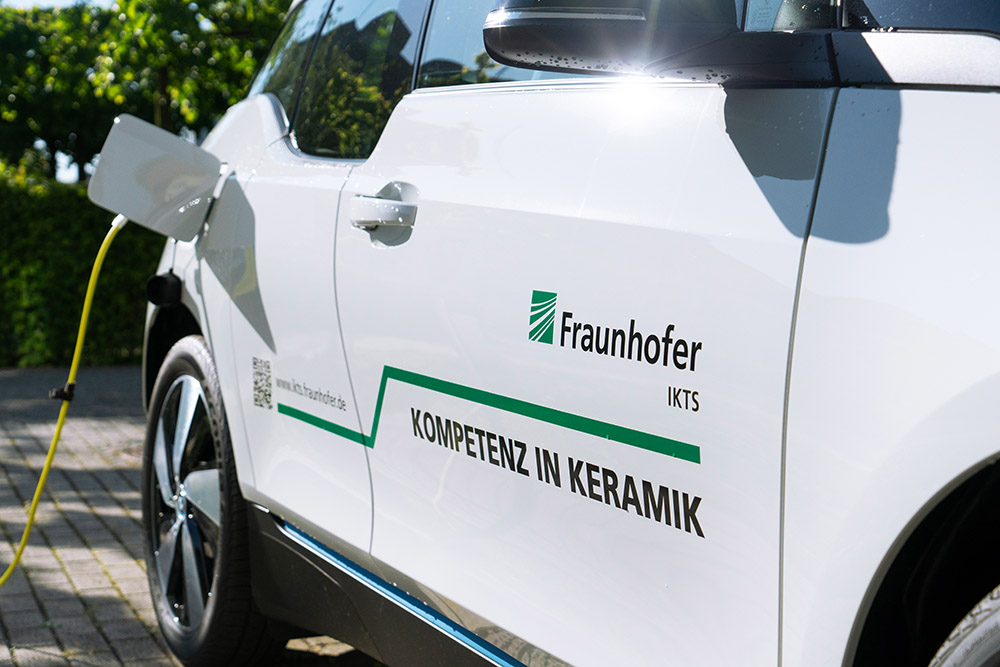Author: Fanny Pohontsch
Battery cells for electric mobility made in EU – ASTRABAT
With 14 partners from eight countries, ASTRABAT, a major European project for the production of novel battery cells, was launched in January. Europe aims to set new standards by 2023 – from the processing of raw materials to cell production and recycling. Fraunhofer IKTS is involved in the project under the leadership of Dr. Kristian Nikolowski. We met him for some insights.
Kristian, what does the acronym ASTRABAT stand for and where exactly does IKTS come in?
ASTRABAT stands for All Solid-sTate Reliable BATtery. In contrast to the systems established today, solid-state batteries are characterized by the highest energy densities of 350 Wh/kg and 1200 Wh/l with great safety and robustness. At IKTS we develop ion-conducting ceramic powders and printing processes with which innovative 3D-structured cell concepts can be produced for this type of storage.

The aim of the project is to develop safe, high-energy and marketable batteries for green mobility. What is the significance of this with regard to the European Union?
The project is part of the European Union's Green Deal and a broader push to promote electromobility. ASTRABAT offers the EU the opportunity to bring together strong players from all over Europe: the partners come from countries such as Belgium, Poland, France, and Spain. All have extensive experience in the field of battery and related technologies, including state-of-the-art electrochemistry and modelling. I expect ASTRABAT to contribute in making Europe a world leader in green technologies.
There are many projects and approaches to e-mobility. How does ASTRABAT differ? What is new?
Solid-state batteries are seen as the next generation of today's lithium-ion batteries. The project focuses on both the scalability of the production of these new batteries and the development of novel materials and manufacturing processes. ASTRABAT is moving from basic research-oriented developments to the proof of industrial manufacturability.
What will mobility look like after the project ends in June 2023?
Mobility must reduce the emission of greenhouse gases and become more effective. This will be promoted by greater use of renewable energies – solar and wind power. But increasing differentiation will be required – batteries for short and medium distances, fuel cells and hydrogen for long distances and heavy vehicles. We will see a more evolutionary development here: electric cars will gain a larger market share, but they will certainly not dominate the market by 2023. There are too many different utilization concepts for this, and there are also too many different residential and living conditions.
Last but not least: Have you yourself already switched to an electric vehicle in your private life?
So far, the only electric car at home is the remote-controlled one of my oldest son. We all practice with it diligently and agree: electric cars are definitely fun! At the moment, however, even if a new car was to be purchased, there would still be the question of charging: this has not been possible at my home – in the city – so far. Recently, however, Fraunhofer IKTS has introduced electric company cars.
This project has received funding from the European Union’s Horizon 2020 research and innovation program under grant agreement N° 875029.
Stay informed! You are welcome to subscribe to our newsletter, read our other blog articles and follow us on Facebook, Instagram, LinkedIn, YouTube and Twitter.

Further information
Mobile Energy Storage Systems and Electrochemistry – Cell concepts
Current research: Ceramic electrolytes for lithium and sodium solid-state batteries
Got to news from May 11, 2020: EU-Project ASTRABAT: A new battery boosts e-mobility in Europe
Press release from January 23, 2020: ASTRABAT: developing a new battery to boost Europe’s electric mobility
Go to project website
